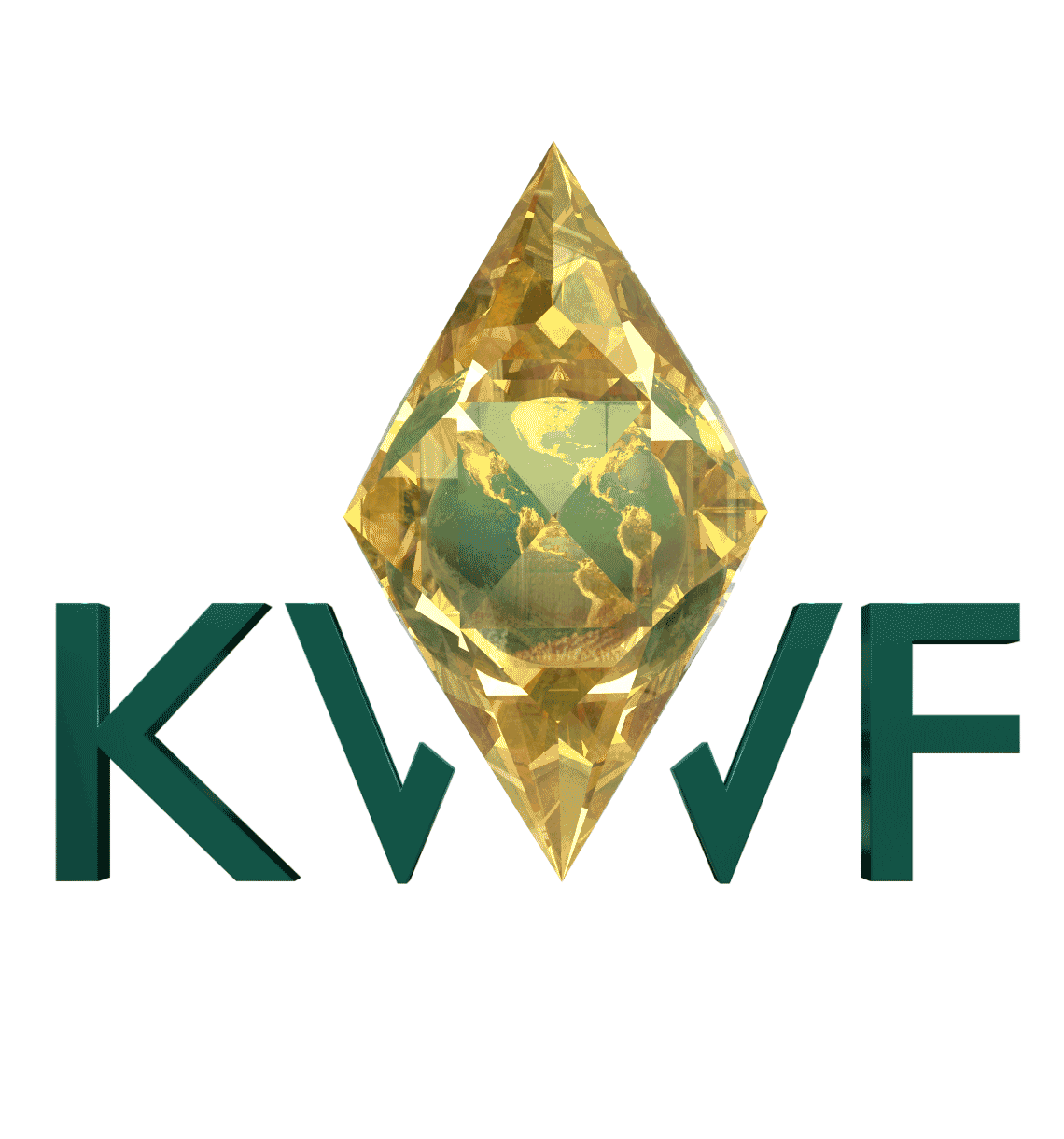Sri Lankan Star Tortoise: Smuggling for the Exotic Pet Market
- Kashmir World Foundation

- Nov 26, 2014
- 7 min read
by Dillon Jones, Wildlife Researcher for KwF
In recent years, the Sri Lankan, or Indian Star, Tortoise (Geochelone elegans ) has been smuggled out of its’ native habitat due to its high price value outside of the country. While not currently endangered, the tortoise is being pushed towards that status due to its highly valued coloration, medicinal, and cultural values, as well as for the exotic pet trade. [1] The tortoises are protected in India, Sri Lanka, and Pakistan and are illegal to trade and posses. However, there is still a large price on their head in areas outside of these countries, leading some people to believe that money far outweighs the risks. Conservation of these species is imperative to its survival.

The Star Tortoise is not currently endangered, however, due to excessive trade, it is at risk of becoming so.
The Sri Lankan tortoise is medium-sized, reaching lengths of up to 15 inches. The stark yellow lines that categorize the species is also what increases their value. They live, on average, 40-80 years in the wild, and live on a diet consisting of mainly grasses, however, they have also been known to feed on insects and carrion. [2] Their native habitat spans large areas of India, Sri Lanka, and southeastern Pakistan. [3] Female star tortoises are able to breed in 7 years, and lay up to 9 clutches (groups) of eggs per year. Each clutch contains between 1 and 10 eggs.[4] Tortoises don't have many natural predators in the wild, as their hard shell and thick skin protects them quite well. Humans are their main predatory force.
Sri Lankan tortoises are desirable due to several different traits. Chinese culture believes they bring good luck if kept in the home, and that they are an important ingredient in medicine. [6] Many of the impoverished locals also desire them for their meat. However, this may have an insignificant to null impact on the species due to the relatively small amount that are collected for this purpose.[4] The main driving factor for poaching is pet trade. Their pattern and coloring makes them highly desirable in the United States, Europe, the Middle East, and many Southeastern Asian Countries for resale in the exotic pet trade.[4] Many retailers claim that the tortoises are captive hatched, but with the high amount of tortoises being exported its hard to believe that the amount they claim born in captivity actually are.
In the reptile pet trade, turtles and tortoises can be classified under several different labels indicating their origin. Captive bred (CB) , which is its parents being bred in captivity, captive hatched (CH), its parents are from the wild but the eggs are harvested and then hatched in captivity, wild caught (WC), where the individual animal is caught directly from the wild, and long term captive (LTC), where the animal was caught in the wild but has been in captivity for a number of years. As a general rule captive bred animals are the healthiest, and least likely to harbor parasites, diseases, or underlying problems as well as they don't contribute to the unregulated trade and smuggling of reptiles from the wild. Long term captive and captive hatched individuals can have around the same level of health as captive bred, with wild caught of course having the lowest level of health. “Wild caught turtles and tortoises often support heavy populations of parasites and various diseases.“[15] This can be a real issue especially when “many dealers are passing off wild caught turtles and tortoises as captive bred individuals, while others being imported from foreign countries are labeled as captive bred when actually they were wild caught or hatched are from eggs removed from turtles butchered for food.“ [15]

Official doing a count on smuggled tortoises
Anywhere between 10-20,000 Star Tortoises are smuggled out of India every year.
The trail of tortoise smuggling starts with a local hunter, usually part of a local tribe. They catch the tortoise from the dry grass scrub land in which they reside. The hunters are paid $1 or less per tortoise by a middleman who, in turn, sells the tortoise to a smuggler[8][4]. Smugglers can sneak them onto airplanes but, with more security checks, sea routes are more desirable. The tortoises can survive for up to 15 days without food, making them hardier than most animals while on these routes.[4] When reaching the desired country, smugglers can expect to sell the illegal tortoises for over $150 each. The retailers at the end of the chain however, can expect to get up to $1000 per tortoise. [4] This high price allows for a conservative estimate of between 10-20,000 exported from their countries of origin per year[5], however, only 3,000 on average are collected by officials. [4]
Indian Star tortoises are underneath CITES appendix II, which states that the current species is not threatened with extinction, but are likely to be if trade is not regulated. This CITES listing certainly does help stop international trade but, ideally, it falls upon the local government. [8] In India, the tortoises is featured as Schedule IV, the lowest rank of protection under the Wildlife Protection Act. If caught, a smuggler can be penalized with a maximum of three years in prison or a Rs.25,000 ($400 USD) fine [9] This sum is low for the apparent value of the tortoises on the marketplace, which does not seem to be a deterrent for many smugglers. In 2008, a man in Thailand was arrested for smuggling 778 Indian Star Tortoises into the country. In 2010, he was again arrested for smuggling in 1,140 live tortoises and a Gavial Crocodile, for which he was released once he posted bail of only $3,300. A fraction compared to the amount he could have made if he had sold all the tortoises to a dealer. Supposedly, the tortoises were on their way to the Chatuchak Market, one of the most significant hubs for illegally smuggled tortoises in the world [10]
However, not all smugglers have the same luck. In July of 2011, 196 tortoises were seized at Ivato International Airport in Antananarivo, Madagascar from 2 passengers. The group included 168 radiated tortoises, 27 ploughshare tortoise, and 1 spider tortoise. The final destination would have been Indonesia, first passing through Nairobi and Dubai. The two men were arrested and the tortoises were sent to varying agencies to rehabilitate and release back into the wild. [11] In June of 2013 the Turtle Survival Alliance sentenced one of the smugglers and 3 of the accomplices were arrested for two years and were given fines that amounted to $574,000 USD. This marks the highest fine levied within Madagascar for the smuggling of tortoises and sets the framework for tighter restrictions on smugglers. [12]
In September of 2013, 952 Indian Star Tortoises were seized by the Indian Border patrol along the Indo-Bangladesh border. This was the largest number of star tortoises seized after being illegally smuggled out of the country. When the two smugglers were spotted by border patrol, they dropped their bags and ran, which led to the seizure. The smugglers were estimated to make Rs. 3.19 Crore or over $500,000 in USD.

The unregulated, over-harvesting of any animal can be quite dangerous to the species overall. The Galapagos Tortoises have only recently increased their numbers to a sustainable level after humans, in the 1800s, had over-harvested them for meat which brought them to the brink of extinction. One species of tortoise may seem like an insignificant species in the grand scheme, however, tighter regulations and better-implemented systems to stop poaching and illegal wildlife trafficking will only help all animals of the world. With each creature that we protect more and more can be saved.
Bibliography
Indian Star Tortoise Geochelone elegans. (n.d.). Retrieved November 12, 2014, from http://www.arocha.org/int-en/work/species/g1/955-DSY.html
Fife, J. (n.d.). Indian Star Tortoise Care Sheet. Retrieved November 12, 2014.
http://www.tortoisetrust.org/articles/elegans.html
Edqvist, U. (n.d.). Tortoise Trust Web - Star Tortoise Basics. Retrieved November 12, 2014.
http://animaldiversity.ummz.umich.edu/accounts/Geochelone_elegans/#9092c57683d221843d98d524407e0879
Bouchard, K. 2009. "Geochelone elegans" (On-line), Animal Diversity Web. Accessed November 11, 2014 at http://animaldiversity.ummz.umich.edu/accounts/Geochelone_elegans/
Shepherd, C., Burgess, E., & Loo, M. (2004). Demand Driven: The Trade of Indian Star Tortoises Geochelone Elegans in Peninsular Malaysia. TRAFFIC Southeast Asia.
http://eol.org/pages/794301/hierarchy_entries/41235783/details
Descriptions and articles about the Star Tortoise (Geochelone elegans as classified by The Reptile Database) - Encyclopedia of Life. (n.d.). Retrieved November 12, 2014.
http://www.arocha.org/int-en/work/species/g1/955-DSY.html
http://www.cites.org/eng/app/index.php
"The CITES Appendices." CITES. The CITES Secretariat, n.d. Web. 11 Nov. 2014. <http://www.cites.org/eng/app/index.php>.
http://www.thehindu.com/todays-paper/tp-opinion/uncovering-the-tortoise-trade-route/article1850672.ece
"Uncovering the Tortoise Trade Route." The Hindu. N.p., 2 June 2007. Web. 11 Nov. 2014. <http://www.thehindu.com/todays-paper/tp-opinion/uncovering-the-tortoise-trade-route/article1850672.ece>.
http://www.traffic.org/home/2010/10/2/tortoises-smuggler-caught-for-second-time-in-bangkok.html
"TRAFFIC - Wildlife Trade News - Tortoises Smuggler Caught for Second Time In Bangkok." TRAFFIC - Wildlife Trade News - Tortoises Smuggler Caught for Second Time In Bangkok. N.p., 2 Oct. 2010. Web. 11 Nov. 2014. <http://www.traffic.org/home/2010/10/2/tortoises-smuggler-caught-for-second-time-in-bangkok.html>.
"Uncovering the Tortoise Trade Route." The Hindu. N.p., 2 June 2007. Web. 11 Nov. 2014. <http://www.thehindu.com/todays-paper/tp-opinion/uncovering-the-tortoise-trade-route/article1850672.ece>.
http://www.traffic.org/home/2010/10/2/tortoises-smuggler-caught-for-second-time-in-bangkok.html
"TRAFFIC - Wildlife Trade News - Tortoises Smuggler Caught for Second Time In Bangkok." TRAFFIC - Wildlife Trade News - Tortoises Smuggler Caught for Second Time In Bangkok. N.p., 2 Oct. 2010. Web. 11 Nov. 2014. <http://www.traffic.org/home/2010/10/2/tortoises-smuggler-caught-for-second-time-in-bangkok.html>.
http://www.turtlesurvival.org/blog/1/149#.VGDWWPnF_tt
Lowe, Heather. "Turtle Survival Alliance." Tortoises Seized in Madagascar. N.p., 28 July 2011. Web. 11 Nov. 2014. <http://www.turtlesurvival.org/blog/1/149#.VGDWWPnF_tt>.
http://www.turtlesurvival.org/blog/1-blog/222-madagascar-tortoise-smugglers-sentenced#.VGDWB_nF_ts
Lowe, Heather. "Turtle Survival Alliance." Madagascar Tortoise Smugglers Sentenced. N.p., 20 June 2013. Web. 11 Nov. 2014. <http://www.turtlesurvival.org/blog/1-blog/222-madagascar-tortoise-smugglers-sentenced#.VGDWB_nF_ts>.
http://archives.deccanchronicle.com/130902/news-crime/article/big-seizure-952-star-tortoises-worth-rs-319-crore-indo-bangla-border
"Big Seizure of 952 Star Tortoises worth Rs 3.19 Crore on Indo-Bangla Border." Deccan Chronicle. PTI, 2 Sept. 2013. Web. 17 Nov. 2014. <http://archives.deccanchronicle.com/130902/news-crime/article/big-seizure-952-star-tortoises-worth-rs-319-crore-indo-bangla-border>.
"Please Only Buy Captive Bred: List of Recommended Sources | The Tortoise Reserve." Please Only Buy Captive Bred: List of Recommended Sources | The Tortoise Reserve. Tortoise Reserve, n.d. Web. 24 Nov. 2014. <http://www.tortoisereserve.org/buycaptivebred/recommendedsources.html>. Photos
http://static.indianexpress.com/pic/uploadedImages/bigImages/B_Id_415881_rescued-tortoise.jpg
Partha, Paul “Big seizure of 952 star tortoises on Indo-Bangla border” 2013 The Indian Express Online Accessed 11/13/2014
http://media-cache-ak0.pinimg.com/736x/90/8c/52/908c52c800dd395d7df6829552aae40d.jpg
Jose, Jacob. "Indian Star Tortoise at the Houston Zoo." Wikipedia. Wikipedia, 1 Oct. 2011. Web. 15 Nov. 2014. <http://upload.wikimedia.org/wikipedia/commons/thumb/8/89/Indian_star_tortoise_-_Houston_Zoo_-_cropped.jpg/1024px-Indian_star_tortoise_-_Houston_Zoo_-_cropped.jpg>.:
Videohttps://www.youtube.com/watch?v=latHPkW1gk4 India File ANI. "03 Sep, 2013 - India's Paramilitary Seize Tortoises worth Millions Being Smuggled." YouTube. YouTube, 3 Sept. 2013. Web. 17 Nov. 2014. <https://www.youtube.com/watch?v=latHPkW1gk4>





Comments